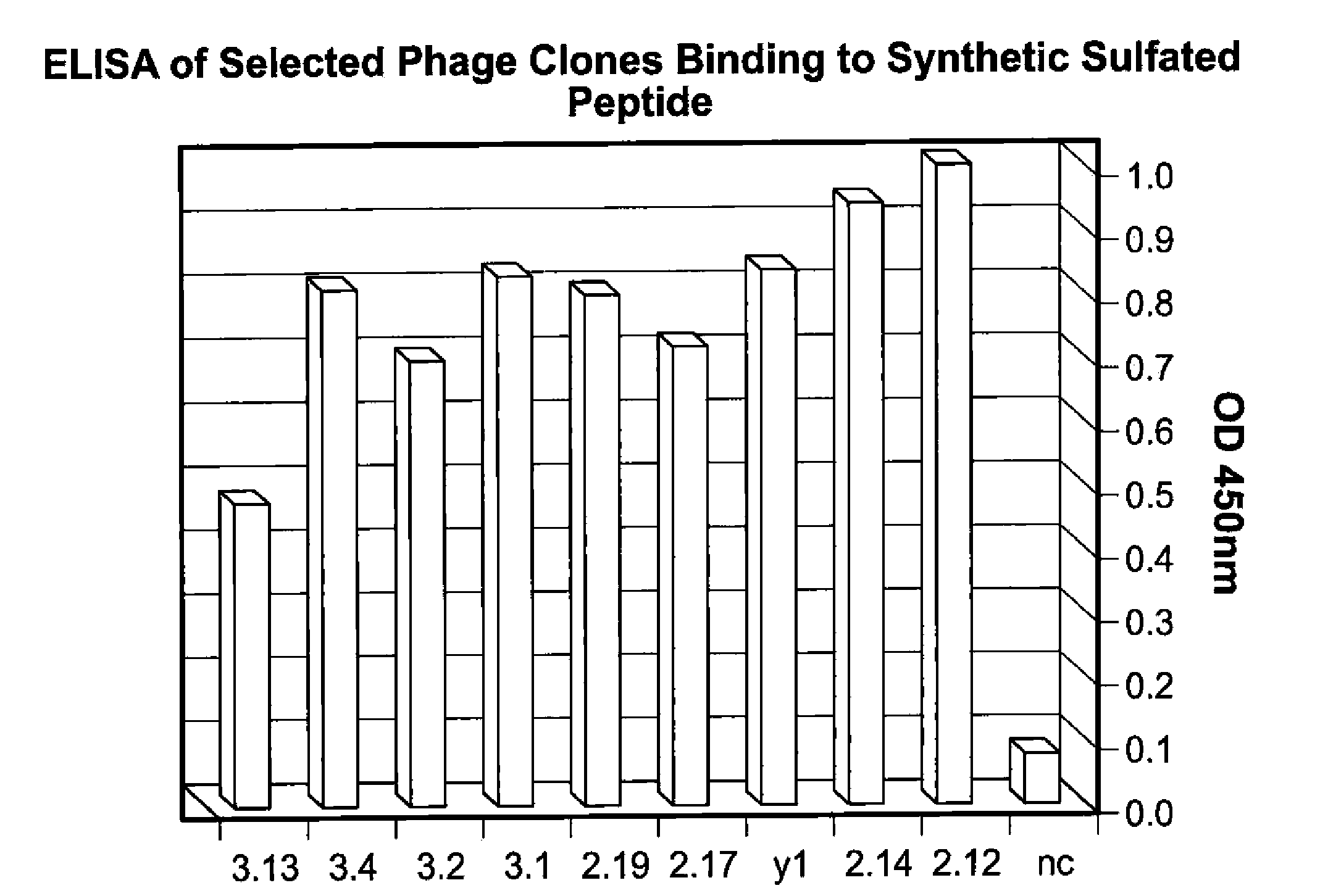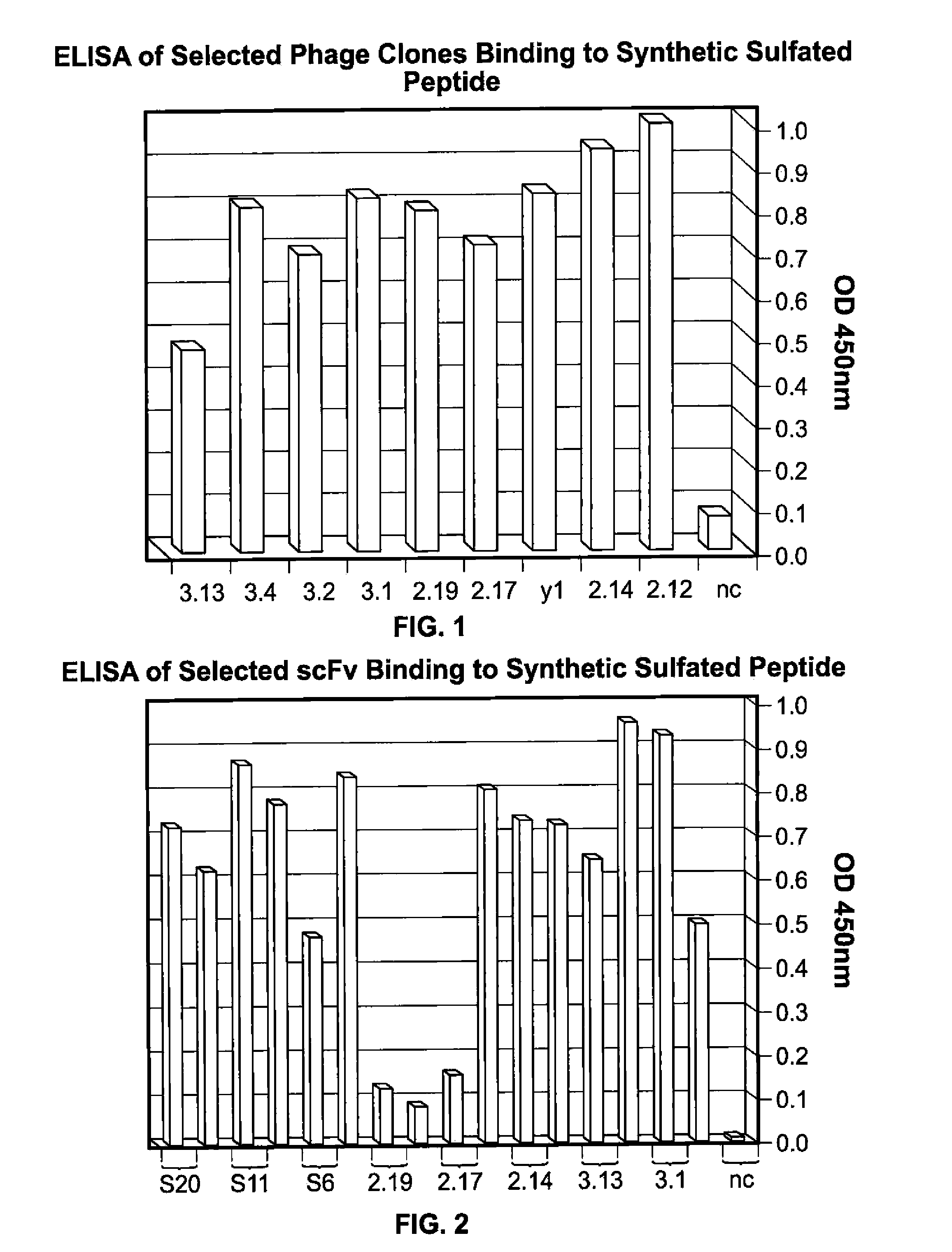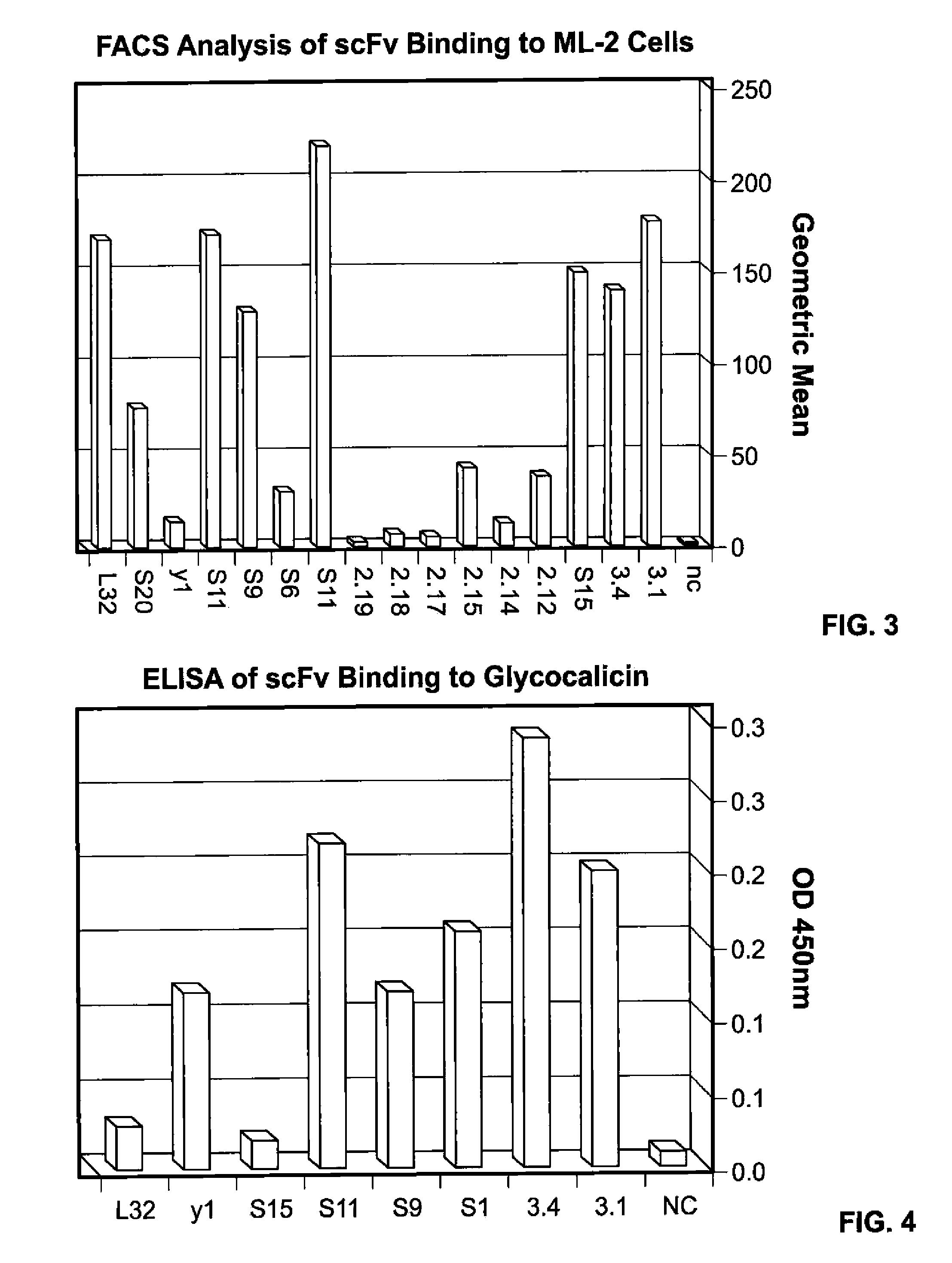Antibodies and uses thereof
a technology of antibodies and antibodies, applied in the field of antibodies, can solve the problems of high antibody immunogenicity, difficult isolating appropriate mabs that display selective binding, and several limitations of approaches, so as to inhibit inflammation, inhibit platelet aggregation, and inhibit restnosis
- Summary
- Abstract
- Description
- Claims
- Application Information
AI Technical Summary
Benefits of technology
Problems solved by technology
Method used
Image
Examples
example 1
[0245]The present example demonstrates selection, production, and initial characterization of S15 scFv antibody fragments, including the binding capabilities of S15 antibody fragments. Briefly, a phage display library based on a specific scaffold of VH-VL with a random CDR3-VH of six amino acids was utilized to identify a scFv antibody that binds sulfated PSGl-1. The scFv antibody was obtained by panning against a synthetic sulfated peptide having the sequence of amino acids 1-17 of the mature PSGL-1 molecule from N-terminus to C-terminus or from C-terminus to N-terminus (corresponding to amino acids 42-58 of the immature PSGL-1 molecule i.e. including the signal sequence). Flow cytometry, particularly fluorescence-activated cell sorting (FACS) and ELISA was used for identifying and characterizing specific phage clones that bind to the synthetic sulfated peptide or to whole cells expressing PSGL-1.
[0246]The phage display library was constructed from a scaffold of a clone isolated fr...
example 2
[0261]The present example describes further characterization of the purified S15 scFv antibody, including its binding capabilities, compared to similarly purified L32 and Y1 scFv.
[0262]FACS analysis was carried out to analyze the binding of purified S15, Y1 and L32 scFv to ML-2 cells in the presence of PBS. The results, shown in FIGS. 8 and 9 indicate that S15 exhibits at least 100 fold greater binding to ML-2 cells as compared to L32 and Y1.
[0263]FACS analysis was carried out to analyze the binding of purified S15, Y1 and L32 scFv to ML-2 cells in the presence of 50% plasma. The results, shown in FIGS. 10 and 11, indicate that the absolute value of binding by S15 was significantly higher (by at least 10 fold) as compared to L32 and Y1.
[0264]The dose response of purified S15 scFv binding to ML-2 cells was also analyzed and compared to that of L32 and Y1. As shown in FIG. 12, the dose response of S15 is significantly greater than that of L32 and Y1, even at 10 nanograms (ng).
example 3
[0265]This example describes the identification of two additional antibodies comprising the consensus sequence which were obtained by panning the library described in Example 1 against a synthetic peptide corresponding to residues 268-285 of GPIb including sulfation at the first tyrosine position.
[0266]The present example demonstrates selection, production, and initial characterization of D1 and D3 scFv antibody fragments, including the binding capabilities of D1 and D3 antibody fragments. Briefly, a phage display library based on a specific scaffold of VH-VL with a random CDR3-VH of six amino acids was utilized to identify an scFv antibody that binds sulfated GPIb. The scFv antibody was obtained by panning against a synthetic sulfated peptide having the sequence of amino acids 268-285 (GDEGDTDLY(SO4)DYYPEEDTE) (SEQ ID NO:44) of the mature GPIb molecule from N-terminus to C-terminus (corresponding to amino acids 284-301 of the immature GPIb molecule, i.e., including the signal seque...
PUM
| Property | Measurement | Unit |
|---|---|---|
| apparent molecular weights | aaaaa | aaaaa |
| apparent molecular weights | aaaaa | aaaaa |
| apparent molecular weights | aaaaa | aaaaa |
Abstract
Description
Claims
Application Information
 Login to View More
Login to View More - R&D
- Intellectual Property
- Life Sciences
- Materials
- Tech Scout
- Unparalleled Data Quality
- Higher Quality Content
- 60% Fewer Hallucinations
Browse by: Latest US Patents, China's latest patents, Technical Efficacy Thesaurus, Application Domain, Technology Topic, Popular Technical Reports.
© 2025 PatSnap. All rights reserved.Legal|Privacy policy|Modern Slavery Act Transparency Statement|Sitemap|About US| Contact US: help@patsnap.com



